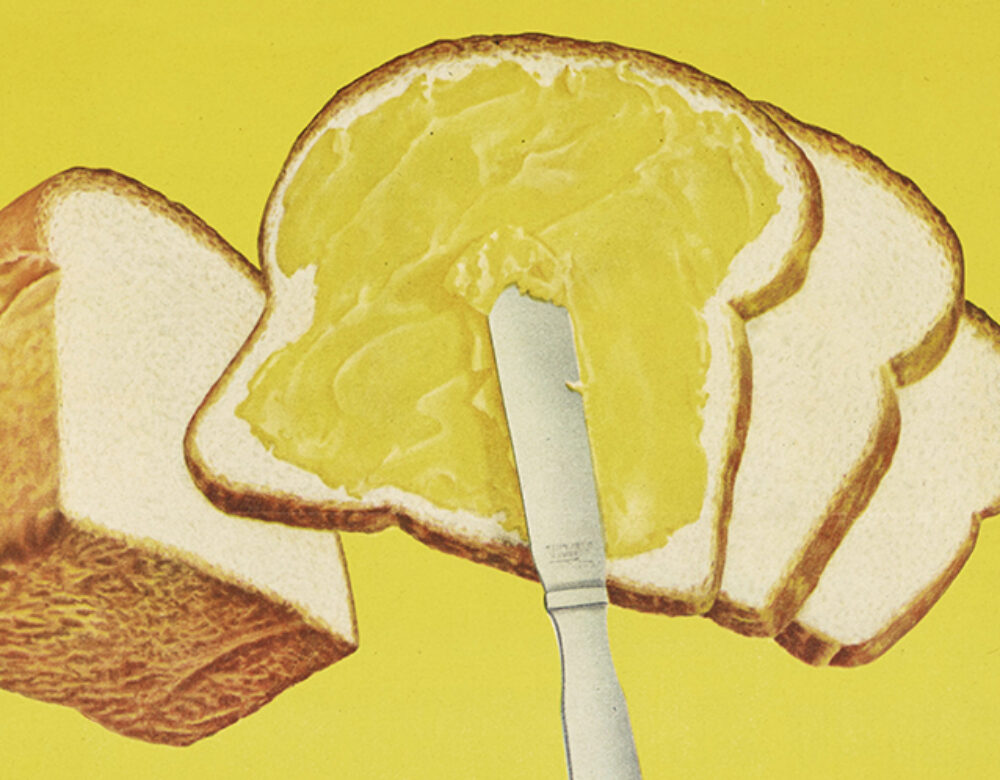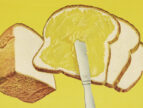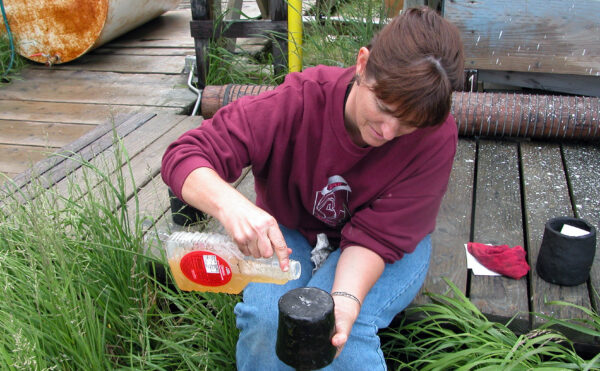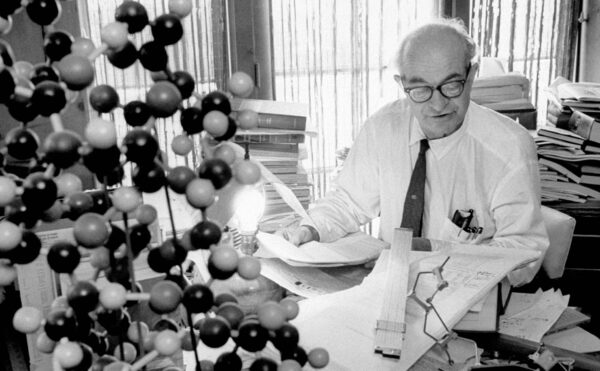This 1947 margarine ad from Ladies’ Home Journal encapsulates a bizarre period in American history: from about the 1880s to the 1950s margarine was heavily taxed, slandered, and in its colored versions banned in many states.
Public distrust of processed foods and a fearful butter industry were largely to blame for marginalizing margarine. Perhaps because of this sordid history the dinner-table debate about margarine versus butter continues to this day. In 2010 the Wenatchee (WA) World reported on an argument between siblings about whether to use margarine or butter while cooking macaroni and cheese. The debate turned violent when one attacked the other with a knife-edged barbecue spatula.
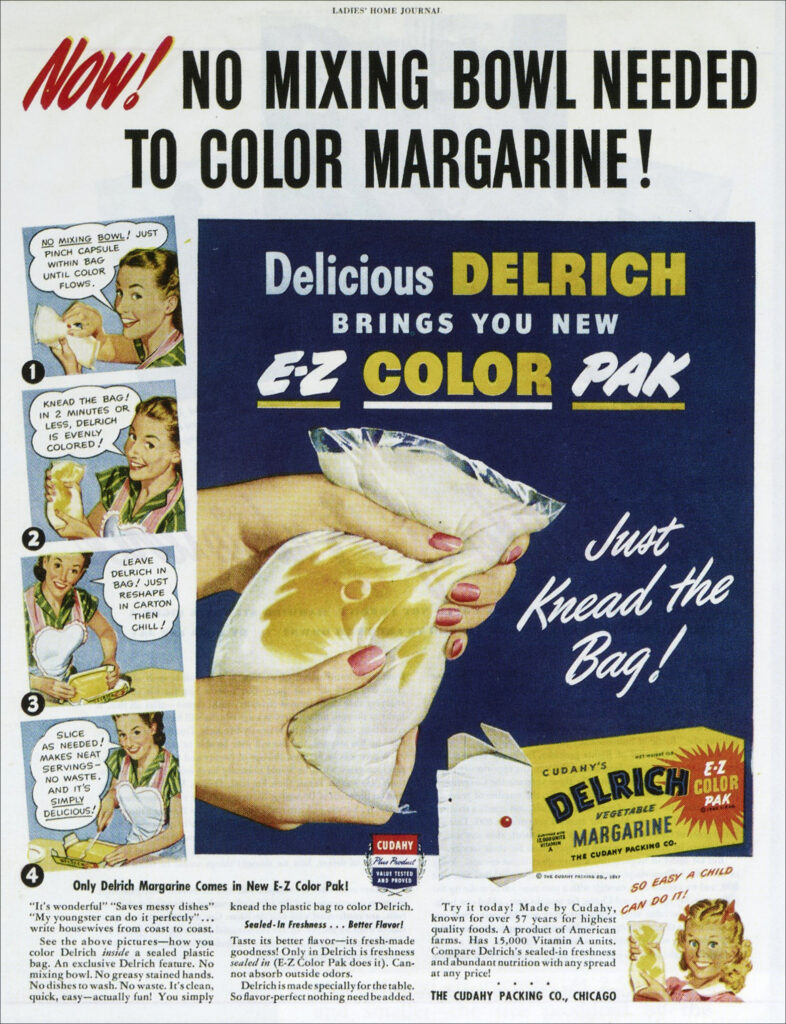
An ad from a 1947 issue of Ladies Home Journal featuring an easy way to color margarine yellow.
Margarine was invented by Hippolyte Mège-Mourièz in 1869 in answer to Napoleon III’s call for a butter substitute. Margarine doesn’t require dairy products and lasts longer without spoiling. It was also much cheaper than butter to produce, and it quickly spread across Europe; Americans were eating it by 1873.
At first the naturally dull-white margarine was stocked next to butter in U.S. stores and offered as a more affordable substitute, but consumers weren’t buying. In response manufacturers started dyeing their product with yellow food coloring to make margarine look more like butter. The strategy worked, alarming a butter industry that feared its cheaper competitor would put dairy producers out of business. Dairy lobbyists convinced state legislatures to place special taxes on margarine and ban artificial coloring, arguing that colored margarine could be passed off as butter. By the early 1900s Congress had imposed a 10-cent-per-pound tax on all colored margarine, and more than 30 states had banned coloration outright.
This combination of laws and taxes forced the margarine industry underground. Margarine smugglers, not unlike Prohibition-era bootleggers, fed the demand for outlawed margarine. For the first half of the 20th century colored margarine was regularly snuck into states that banned it, where it was passed off as real butter. Smugglers Charles Wille, John C. McMonigle, and Joseph and Toney Wirth were all sent to federal prison for illegal commerce in margarine.
Some margarine companies circumvented the anti–food coloring laws in a more law-abiding manner. Many began including packets of food dye with purchases of margarine. As shown in the advertisement above, Delrich built a pouch of coloring into the bag that consumers could mix in themselves.
Margarine returned to favor during both world wars as a result of food conservation and rationing. The federal tax was repealed in 1950, a move backed by President Harry Truman. In 1967 Wisconsin, dairy capital of the United States, was the last state to remove coloration bans.
In the past people may have distrusted margarine because they didn’t know what it was made of. And unlike butter, which is produced by churning cream, manufacturing margarine requires a bit more work. Hydrogen gas is mixed with liquid oil extracted from plants, a process known as hydrogenation. The hydrogen changes the chemical bonding of fat molecules, turning the liquid into a semisolid that can be spread on food. Butter and margarine have the same percentage of fat, the difference is whether that fat comes from animals or plants.
In the 1950s saturated fat was linked to heart disease. Butter is full of saturated fat, so many consumers turned to margarine, the partially unsaturated option. Opinion reversed in the 1990s when studies began linking trans fats, created by the hydrogenation process, to heart disease. Suddenly demand rose for butter.
The debate between the fats has raged ever since. Even though manufacturers have developed methods of making margarine with fewer trans fats, this complicated story has created a dispute that may only be resolved with a knife-edged barbecue spatula.

